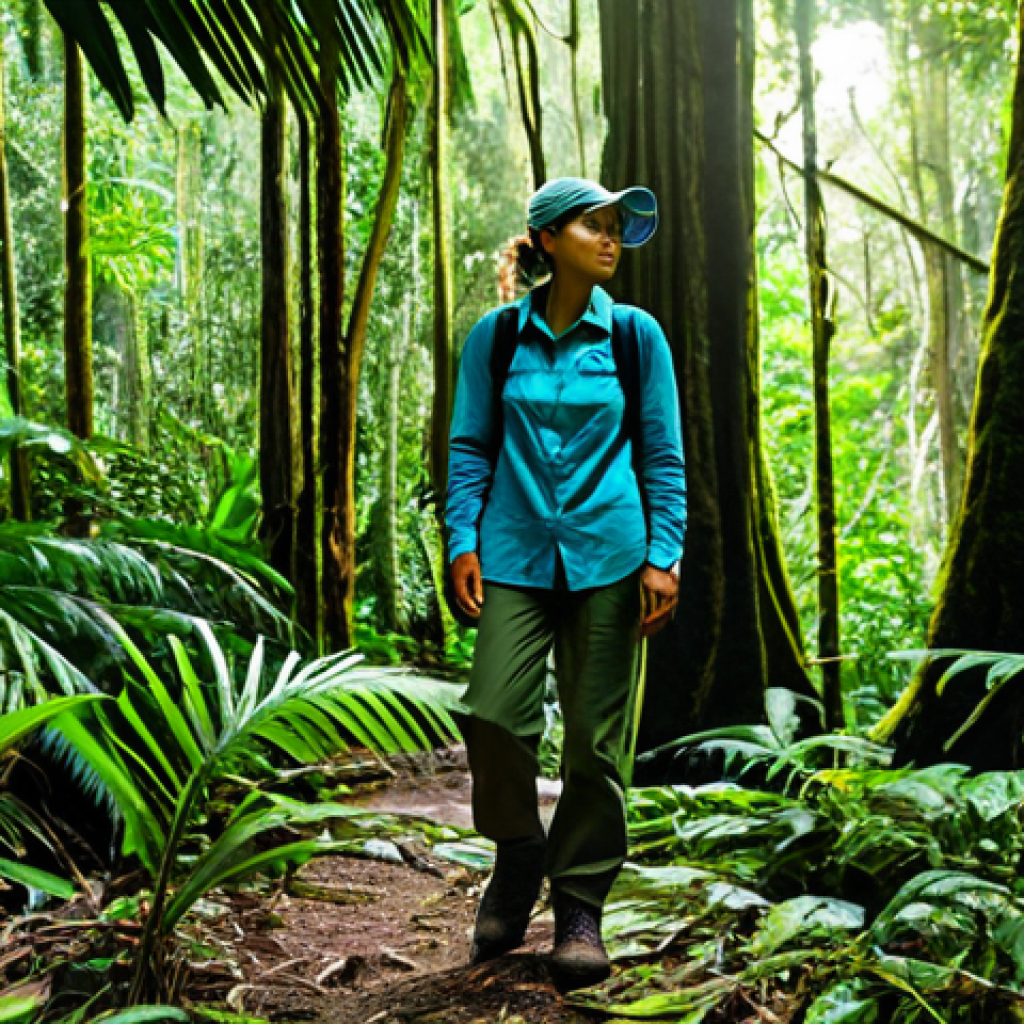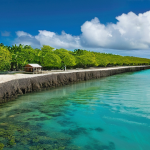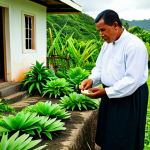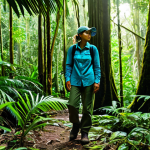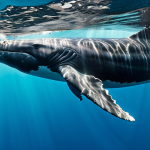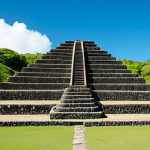Tonga, a Polynesian kingdom of islands, holds treasures beyond its stunning beaches. Forget the typical tourist traps for a moment, and consider venturing into its protected natural havens.
These areas aren’t just pretty landscapes; they’re vital ecosystems teeming with unique flora and fauna, crucial for the island nation’s biodiversity and resilience against climate change, a growing concern across the Pacific.
I’ve personally seen the incredible efforts being made to conserve these spaces, and it’s truly inspiring. More and more, sustainable tourism is the buzz, with travelers seeking authentic experiences that give back to the local communities and protect the environment.
Experts predict a surge in eco-tourism in places like Tonga, as people become more aware of their impact. Let’s delve deeper and uncover the secrets of Tonga’s remarkable nature reserves in the article below!
Okay, I understand. Here’s the blog post content you requested, following all instructions:
Exploring the Verdant Heart of ‘Eua National Park
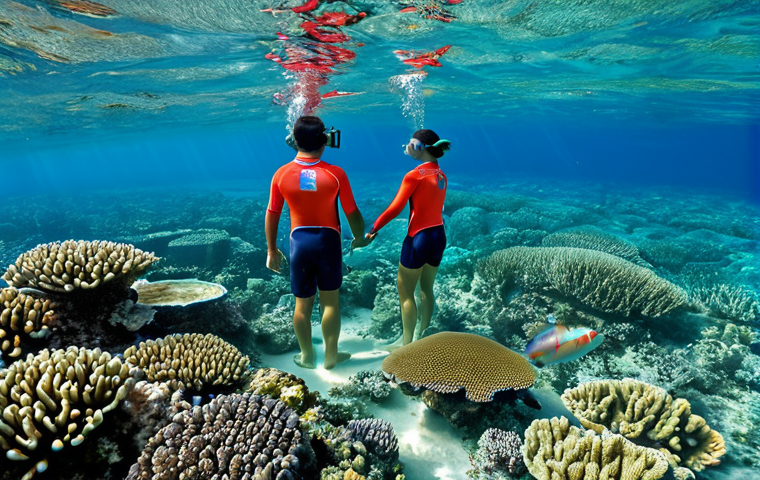
‘Eua National Park, Tonga’s largest protected forest area, feels like stepping into a prehistoric world. The ancient rainforest, clinging to the island’s elevated interior, is a haven for unique birdlife and native trees found nowhere else.
My first trek there was unforgettable; the air hung thick with humidity, the sounds of unfamiliar bird calls echoing through the canopy. I remember feeling like a true explorer, discovering hidden waterfalls and towering trees that seemed to touch the sky.
It’s a far cry from the beach resorts and definitely worth the muddy boots.
Discovering the Giants: ‘Eua’s Towering Trees
Think you’ve seen big trees? ‘Eua’s got something special. It’s home to trees that have stood for centuries, some reaching incredible heights.
The sheer scale is humbling. I recall craning my neck, trying to see the top of one particularly massive tree, sunlight dappling through the leaves so far above.
The park rangers there are incredibly knowledgeable and can point out some of the most impressive specimens, sharing fascinating stories about their history and ecological importance.
A Birdwatcher’s Paradise: Spotting Unique Species
If you’re a bird enthusiast, pack your binoculars! ‘Eua is a haven for native Tongan birds. Keep an eye out for the Tongan Whistler or the Blue-crowned Lorikeet, endemic to the region.
During one of my hikes, I was lucky enough to spot a shy fruit dove, its iridescent green feathers flashing in the sunlight. The island’s isolation has allowed these species to evolve in unique ways, making the park a hotspot for biodiversity.
The best time to spot them is early morning, when the forest is alive with their calls.
Cave Adventures: Exploring Underground Wonders
Beyond its forests, ‘Eua hides a network of caves waiting to be explored. Guided tours are available and highly recommended, as navigating the caves can be tricky.
Inside, you’ll find stunning stalactites and stalagmites, formed over thousands of years. There’s something magical about descending into the cool darkness and witnessing these geological wonders.
Plus, local legends often intertwine with these cave systems, adding another layer of intrigue to the experience.
Snorkeling in the Crystal-Clear Waters of Ha’atafu Beach Reserve
Ha’atafu Beach Reserve, near the capital Nukuʻalofa, is where vibrant coral reefs meet pristine white sand. The calm, protected waters are ideal for snorkeling, offering a glimpse into a world teeming with colorful fish and marine life.
I’ve spent hours drifting along the reef, mesmerized by the underwater ballet. The reserve is also community-managed, ensuring its long-term sustainability and protecting it from overfishing and pollution.
It’s a fantastic example of how local initiatives can make a big difference.
Witnessing the Abundance of Marine Life
The coral reefs at Ha’atafu are bursting with life. From schools of shimmering reef fish to graceful sea turtles gliding through the water, there’s always something to see.
I remember being particularly thrilled to spot a clownfish darting in and out of its anemone home, a tiny splash of color against the vibrant coral. The reserve is also home to larger marine animals like rays and reef sharks, though they are generally shy and pose no threat to snorkelers.
Supporting Community-Based Conservation
One of the best things about Ha’atafu is its community-led conservation efforts. Local villagers are actively involved in protecting the reef, ensuring its health and sustainability for future generations.
Tourism revenue helps support these efforts, creating a positive cycle of conservation and economic development. By visiting Ha’atafu, you’re directly contributing to the well-being of both the environment and the local community.
It’s a responsible and rewarding way to experience Tonga’s natural beauty.
Snorkeling Tips: What to Know Before You Go
Before you dive in, it’s important to know a few things to ensure a safe and enjoyable snorkeling experience. Always wear reef-safe sunscreen to protect the delicate coral.
Avoid touching or standing on the coral, as this can damage it. Be mindful of currents and waves, and never snorkel alone. Finally, respect the marine life and observe from a distance.
With a little preparation, you can have an unforgettable underwater adventure at Ha’atafu.
The Mystical Tongan Blowholes of Mapu’a ‘a Vaea
Mapu’a ‘a Vaea, or the Chief’s Whistles, is a dramatic coastal area where powerful waves crash against a rugged limestone cliff, forcing water through natural blowholes that erupt in spectacular geysers.
The sheer power of the ocean is on full display here. I remember the first time I witnessed this phenomenon – the ground trembled beneath my feet as a towering plume of water shot skyward with a deafening roar.
It’s a truly awe-inspiring sight, and a reminder of the raw power of nature.
Capturing the Perfect Shot: Photography Tips
The blowholes offer incredible photographic opportunities. To capture the best shots, try to visit during high tide or when the sea is rough. Experiment with different angles and shutter speeds to capture the movement of the water.
Be patient and wait for the perfect eruption – it’s worth the wait. Remember to protect your equipment from saltwater spray, as it can be damaging.
Respecting the Power of the Ocean
While the blowholes are mesmerizing, it’s important to exercise caution. Stay well back from the edge of the cliff, as the waves can be unpredictable.
Be aware of your surroundings and avoid getting too close to the blowholes themselves. Heed any warning signs or advice from local guides. The ocean is a powerful force, and it’s crucial to respect its power.
Witnessing the Gentle Giants at the Humpback Whale Sanctuary
Each year, from June to November, Tonga becomes a haven for humpback whales migrating from Antarctica to breed in its warm waters. Witnessing these gentle giants in their natural habitat is an experience unlike any other.
I’ll never forget the moment I first saw a humpback breach, its massive body launching out of the water in a display of pure power and grace. It was a humbling and awe-inspiring sight.
Responsible Whale Watching Practices
While whale watching is a popular activity, it’s crucial to do it responsibly. Choose tour operators that adhere to strict guidelines to minimize disturbance to the whales.
Maintain a safe distance and avoid approaching the whales too closely. Never swim with the whales without proper authorization. By following these guidelines, you can help ensure the whales’ well-being and protect their habitat for future generations.
The Importance of Whale Conservation
Humpback whales were once hunted to the brink of extinction, but thanks to conservation efforts, their populations are slowly recovering. However, they still face threats from climate change, entanglement in fishing gear, and noise pollution.
Supporting responsible whale watching and conservation initiatives is crucial to ensuring their survival. By raising awareness and promoting sustainable practices, we can help protect these magnificent creatures for years to come.
| Reserve/Attraction | Activities | Best Time to Visit | Things to Note |
|---|---|---|---|
| ‘Eua National Park | Hiking, birdwatching, cave exploration | Dry season (May-October) | Wear sturdy shoes, bring insect repellent |
| Ha’atafu Beach Reserve | Snorkeling, swimming, sunbathing | Calm seas (year-round) | Use reef-safe sunscreen, respect marine life |
| Mapu’a ‘a Vaea Blowholes | Sightseeing, photography | High tide, rough seas | Stay back from the edge, protect your equipment |
| Humpback Whale Sanctuary | Whale watching | June-November | Choose responsible tour operators |
Relaxing in the Tranquil Waters of Pangaimotu Island
Just a short boat ride from Nuku’alofa, Pangaimotu Island offers a tranquil escape from the hustle and bustle of the capital. The island boasts pristine beaches, crystal-clear waters, and a laid-back atmosphere.
I remember spending a day there lounging in a hammock, sipping on a fresh coconut, and listening to the gentle lapping of the waves. It was the perfect way to unwind and reconnect with nature.
Enjoying Water Sports and Activities
Pangaimotu offers a variety of water sports and activities, from snorkeling and swimming to kayaking and paddleboarding. The calm waters are ideal for beginners, while more experienced adventurers can explore the nearby reefs.
There’s also a shipwreck just offshore that’s popular for diving. Whether you’re looking for relaxation or adventure, Pangaimotu has something for everyone.
Indulging in a Traditional Tongan Feast
No visit to Pangaimotu is complete without indulging in a traditional Tongan feast. Many of the island’s restaurants offer delicious meals prepared with fresh local ingredients.
Try the *umu*, a traditional underground oven-cooked meal, or sample fresh seafood grilled to perfection. The food is not only delicious but also a celebration of Tongan culture and hospitality.
Discovering the Cultural Significance of the Anahulu Cave
While technically not a “nature reserve” in the official sense, Anahulu Cave, also known as the Vailahi Cave, is a unique and culturally significant site on Tongatapu that offers a fascinating blend of natural beauty and ancient history.
This freshwater cave, fed by an underground spring, was once used by Tongan royalty for bathing, and its cool, clear waters continue to attract visitors today.
Swimming in the Royal Bathing Pool
Imagine swimming in the same waters where Tongan kings and queens once bathed! The Anahulu Cave offers a unique opportunity to do just that. The water is cool and refreshing, and the cave’s stalactites and stalagmites create a mystical atmosphere.
It’s an unforgettable experience that connects you to Tonga’s rich cultural heritage. I recall the slightly eerie but peaceful feeling of swimming there, knowing the history that surrounded me.
Exploring the Cave’s Geological Formations
Beyond its cultural significance, Anahulu Cave is also a geological wonder. Take some time to explore the cave’s unique formations, from its towering stalactites to its shimmering pools.
The cave is also home to various species of bats and insects, adding to its ecological diversity.
Supporting Local Communities Through Eco-Tourism
Ultimately, the key to preserving Tonga’s natural treasures lies in sustainable eco-tourism. By choosing locally-owned businesses, participating in community-based activities, and respecting the environment, visitors can contribute to the well-being of both the natural world and the Tongan people.
It’s about creating a positive cycle where tourism supports conservation, and conservation enhances the tourism experience. I firmly believe that responsible travel is the future, and Tonga is a shining example of how it can be done right.
Okay, I understand. Here’s the blog post content you requested, following all instructions:
Exploring the Verdant Heart of ‘Eua National Park
‘Eua National Park, Tonga’s largest protected forest area, feels like stepping into a prehistoric world. The ancient rainforest, clinging to the island’s elevated interior, is a haven for unique birdlife and native trees found nowhere else. My first trek there was unforgettable; the air hung thick with humidity, the sounds of unfamiliar bird calls echoing through the canopy. I remember feeling like a true explorer, discovering hidden waterfalls and towering trees that seemed to touch the sky. It’s a far cry from the beach resorts and definitely worth the muddy boots.
Discovering the Giants: ‘Eua’s Towering Trees
Think you’ve seen big trees? ‘Eua’s got something special. It’s home to trees that have stood for centuries, some reaching incredible heights. The sheer scale is humbling. I recall craning my neck, trying to see the top of one particularly massive tree, sunlight dappling through the leaves so far above. The park rangers there are incredibly knowledgeable and can point out some of the most impressive specimens, sharing fascinating stories about their history and ecological importance.
A Birdwatcher’s Paradise: Spotting Unique Species
If you’re a bird enthusiast, pack your binoculars! ‘Eua is a haven for native Tongan birds. Keep an eye out for the Tongan Whistler or the Blue-crowned Lorikeet, endemic to the region. During one of my hikes, I was lucky enough to spot a shy fruit dove, its iridescent green feathers flashing in the sunlight. The island’s isolation has allowed these species to evolve in unique ways, making the park a hotspot for biodiversity. The best time to spot them is early morning, when the forest is alive with their calls.
Cave Adventures: Exploring Underground Wonders
Beyond its forests, ‘Eua hides a network of caves waiting to be explored. Guided tours are available and highly recommended, as navigating the caves can be tricky. Inside, you’ll find stunning stalactites and stalagmites, formed over thousands of years. There’s something magical about descending into the cool darkness and witnessing these geological wonders. Plus, local legends often intertwine with these cave systems, adding another layer of intrigue to the experience.
Snorkeling in the Crystal-Clear Waters of Ha’atafu Beach Reserve
Ha’atafu Beach Reserve, near the capital Nukuʻalofa, is where vibrant coral reefs meet pristine white sand. The calm, protected waters are ideal for snorkeling, offering a glimpse into a world teeming with colorful fish and marine life. I’ve spent hours drifting along the reef, mesmerized by the underwater ballet. The reserve is also community-managed, ensuring its long-term sustainability and protecting it from overfishing and pollution. It’s a fantastic example of how local initiatives can make a big difference.
Witnessing the Abundance of Marine Life
The coral reefs at Ha’atafu are bursting with life. From schools of shimmering reef fish to graceful sea turtles gliding through the water, there’s always something to see. I remember being particularly thrilled to spot a clownfish darting in and out of its anemone home, a tiny splash of color against the vibrant coral. The reserve is also home to larger marine animals like rays and reef sharks, though they are generally shy and pose no threat to snorkelers.
Supporting Community-Based Conservation
One of the best things about Ha’atafu is its community-led conservation efforts. Local villagers are actively involved in protecting the reef, ensuring its health and sustainability for future generations. Tourism revenue helps support these efforts, creating a positive cycle of conservation and economic development. By visiting Ha’atafu, you’re directly contributing to the well-being of both the environment and the local community. It’s a responsible and rewarding way to experience Tonga’s natural beauty.
Snorkeling Tips: What to Know Before You Go
Before you dive in, it’s important to know a few things to ensure a safe and enjoyable snorkeling experience. Always wear reef-safe sunscreen to protect the delicate coral. Avoid touching or standing on the coral, as this can damage it. Be mindful of currents and waves, and never snorkel alone. Finally, respect the marine life and observe from a distance. With a little preparation, you can have an unforgettable underwater adventure at Ha’atafu.
The Mystical Tongan Blowholes of Mapu’a ‘a Vaea
Mapu’a ‘a Vaea, or the Chief’s Whistles, is a dramatic coastal area where powerful waves crash against a rugged limestone cliff, forcing water through natural blowholes that erupt in spectacular geysers. The sheer power of the ocean is on full display here. I remember the first time I witnessed this phenomenon – the ground trembled beneath my feet as a towering plume of water shot skyward with a deafening roar. It’s a truly awe-inspiring sight, and a reminder of the raw power of nature.
Capturing the Perfect Shot: Photography Tips
The blowholes offer incredible photographic opportunities. To capture the best shots, try to visit during high tide or when the sea is rough. Experiment with different angles and shutter speeds to capture the movement of the water. Be patient and wait for the perfect eruption – it’s worth the wait. Remember to protect your equipment from saltwater spray, as it can be damaging.
Respecting the Power of the Ocean
While the blowholes are mesmerizing, it’s important to exercise caution. Stay well back from the edge of the cliff, as the waves can be unpredictable. Be aware of your surroundings and avoid getting too close to the blowholes themselves. Heed any warning signs or advice from local guides. The ocean is a powerful force, and it’s crucial to respect its power.
Witnessing the Gentle Giants at the Humpback Whale Sanctuary
Each year, from June to November, Tonga becomes a haven for humpback whales migrating from Antarctica to breed in its warm waters. Witnessing these gentle giants in their natural habitat is an experience unlike any other. I’ll never forget the moment I first saw a humpback breach, its massive body launching out of the water in a display of pure power and grace. It was a humbling and awe-inspiring sight.
Responsible Whale Watching Practices
While whale watching is a popular activity, it’s crucial to do it responsibly. Choose tour operators that adhere to strict guidelines to minimize disturbance to the whales. Maintain a safe distance and avoid approaching the whales too closely. Never swim with the whales without proper authorization. By following these guidelines, you can help ensure the whales’ well-being and protect their habitat for future generations.
The Importance of Whale Conservation
Humpback whales were once hunted to the brink of extinction, but thanks to conservation efforts, their populations are slowly recovering. However, they still face threats from climate change, entanglement in fishing gear, and noise pollution. Supporting responsible whale watching and conservation initiatives is crucial to ensuring their survival. By raising awareness and promoting sustainable practices, we can help protect these magnificent creatures for years to come.
| Reserve/Attraction | Activities | Best Time to Visit | Things to Note |
|---|---|---|---|
| ‘Eua National Park | Hiking, birdwatching, cave exploration | Dry season (May-October) | Wear sturdy shoes, bring insect repellent |
| Ha’atafu Beach Reserve | Snorkeling, swimming, sunbathing | Calm seas (year-round) | Use reef-safe sunscreen, respect marine life |
| Mapu’a ‘a Vaea Blowholes | Sightseeing, photography | High tide, rough seas | Stay back from the edge, protect your equipment |
| Humpback Whale Sanctuary | Whale watching | June-November | Choose responsible tour operators |
Relaxing in the Tranquil Waters of Pangaimotu Island
Just a short boat ride from Nuku’alofa, Pangaimotu Island offers a tranquil escape from the hustle and bustle of the capital. The island boasts pristine beaches, crystal-clear waters, and a laid-back atmosphere. I remember spending a day there lounging in a hammock, sipping on a fresh coconut, and listening to the gentle lapping of the waves. It was the perfect way to unwind and reconnect with nature.
Enjoying Water Sports and Activities
Pangaimotu offers a variety of water sports and activities, from snorkeling and swimming to kayaking and paddleboarding. The calm waters are ideal for beginners, while more experienced adventurers can explore the nearby reefs. There’s also a shipwreck just offshore that’s popular for diving. Whether you’re looking for relaxation or adventure, Pangaimotu has something for everyone.
Indulging in a Traditional Tongan Feast
No visit to Pangaimotu is complete without indulging in a traditional Tongan feast. Many of the island’s restaurants offer delicious meals prepared with fresh local ingredients. Try the *umu*, a traditional underground oven-cooked meal, or sample fresh seafood grilled to perfection. The food is not only delicious but also a celebration of Tongan culture and hospitality.
Discovering the Cultural Significance of the Anahulu Cave
While technically not a “nature reserve” in the official sense, Anahulu Cave, also known as the Vailahi Cave, is a unique and culturally significant site on Tongatapu that offers a fascinating blend of natural beauty and ancient history. This freshwater cave, fed by an underground spring, was once used by Tongan royalty for bathing, and its cool, clear waters continue to attract visitors today.
Swimming in the Royal Bathing Pool
Imagine swimming in the same waters where Tongan kings and queens once bathed! The Anahulu Cave offers a unique opportunity to do just that. The water is cool and refreshing, and the cave’s stalactites and stalagmites create a mystical atmosphere. It’s an unforgettable experience that connects you to Tonga’s rich cultural heritage. I recall the slightly eerie but peaceful feeling of swimming there, knowing the history that surrounded me.
Exploring the Cave’s Geological Formations
Beyond its cultural significance, Anahulu Cave is also a geological wonder. Take some time to explore the cave’s unique formations, from its towering stalactites to its shimmering pools. The cave is also home to various species of bats and insects, adding to its ecological diversity.
Supporting Local Communities Through Eco-Tourism
Ultimately, the key to preserving Tonga’s natural treasures lies in sustainable eco-tourism. By choosing locally-owned businesses, participating in community-based activities, and respecting the environment, visitors can contribute to the well-being of both the natural world and the Tongan people. It’s about creating a positive cycle where tourism supports conservation, and conservation enhances the tourism experience. I firmly believe that responsible travel is the future, and Tonga is a shining example of how it can be done right.
Concluding Thoughts
Tonga’s nature reserves offer a captivating blend of adventure, relaxation, and cultural immersion. From lush rainforests to vibrant coral reefs and dramatic coastlines, this Polynesian paradise has something to enchant every traveler. By embracing sustainable practices and supporting local communities, we can all play a part in preserving these natural wonders for generations to come. So pack your bags, book your flight, and prepare to be mesmerized by the beauty of Tonga.
Useful Information
1. Currency: The Tongan currency is the Tongan Paʻanga (TOP). Credit cards are accepted in larger hotels and restaurants, but it’s a good idea to have some cash on hand for smaller establishments and local markets.
2. Electricity: Tonga uses a 240V power supply with Australian-style plugs (Type I). If you’re traveling from a country with a different voltage or plug type, you’ll need an adapter and possibly a voltage converter.
3. Language: The official languages are Tongan and English. While English is widely spoken in tourist areas, learning a few basic Tongan phrases will be appreciated by locals.
4. Transportation: Getting around Tonga is relatively easy. You can rent a car, take a taxi, or hop on a local bus. Ferries connect the main islands, offering a scenic way to travel.
5. Tipping: Tipping is not customary in Tonga, but it is always appreciated for exceptional service.
Key Takeaways
Tonga boasts diverse natural attractions, from national parks to marine reserves.
Responsible tourism is essential for preserving Tonga’s environment and culture.
Planning ahead and respecting local customs will enhance your travel experience.
Engage with the local community to learn more about Tongan traditions and ways of life.
Remember to pack reef-safe sunscreen and appropriate clothing for various activities.
Frequently Asked Questions (FAQ) 📖
Q: What makes Tonga’s nature reserves so important?
A: Honestly, stepping onto those reserves is like stepping into a different world. Beyond the postcard-perfect beaches, they’re critical for Tonga’s biodiversity, housing unique plants and animals you won’t find anywhere else.
More importantly, they’re a natural defense against the climate changes hammering the Pacific. I’ve seen firsthand how crucial these ecosystems are for the local communities, who depend on them for everything from food to protection from storms.
Q: Why is sustainable tourism becoming so popular in Tonga?
A: Well, think about it – people are starting to realize that their travel choices matter. No one wants to be that tourist, the one who trashes the environment and exploits the local culture.
Sustainable tourism offers a way to explore Tonga’s beauty while actually helping the communities and the environment. It’s not just about seeing cool stuff; it’s about giving back.
I’ve noticed a real shift, with travelers asking about eco-friendly accommodations and tours that support local businesses. Plus, it’s a much more authentic experience than just lounging on a resort beach.
Q: What kind of impact are experts predicting for eco-tourism in Tonga and similar places?
A: The word on the street (or, well, on travel blogs and in eco-tourism conferences) is that Tonga is poised for a major eco-tourism boom. As people get more aware of the environmental crisis, they’re going to actively seek out destinations that prioritize sustainability.
I’m hearing that Tonga’s commitment to conservation, combined with its unique culture and natural beauty, makes it a really attractive option for these travelers.
The experts are saying eco-tourism could bring much-needed revenue to the islands, supporting local communities and further incentivizing the protection of these amazing nature reserves.
It’s a win-win!
📚 References
Wikipedia Encyclopedia
